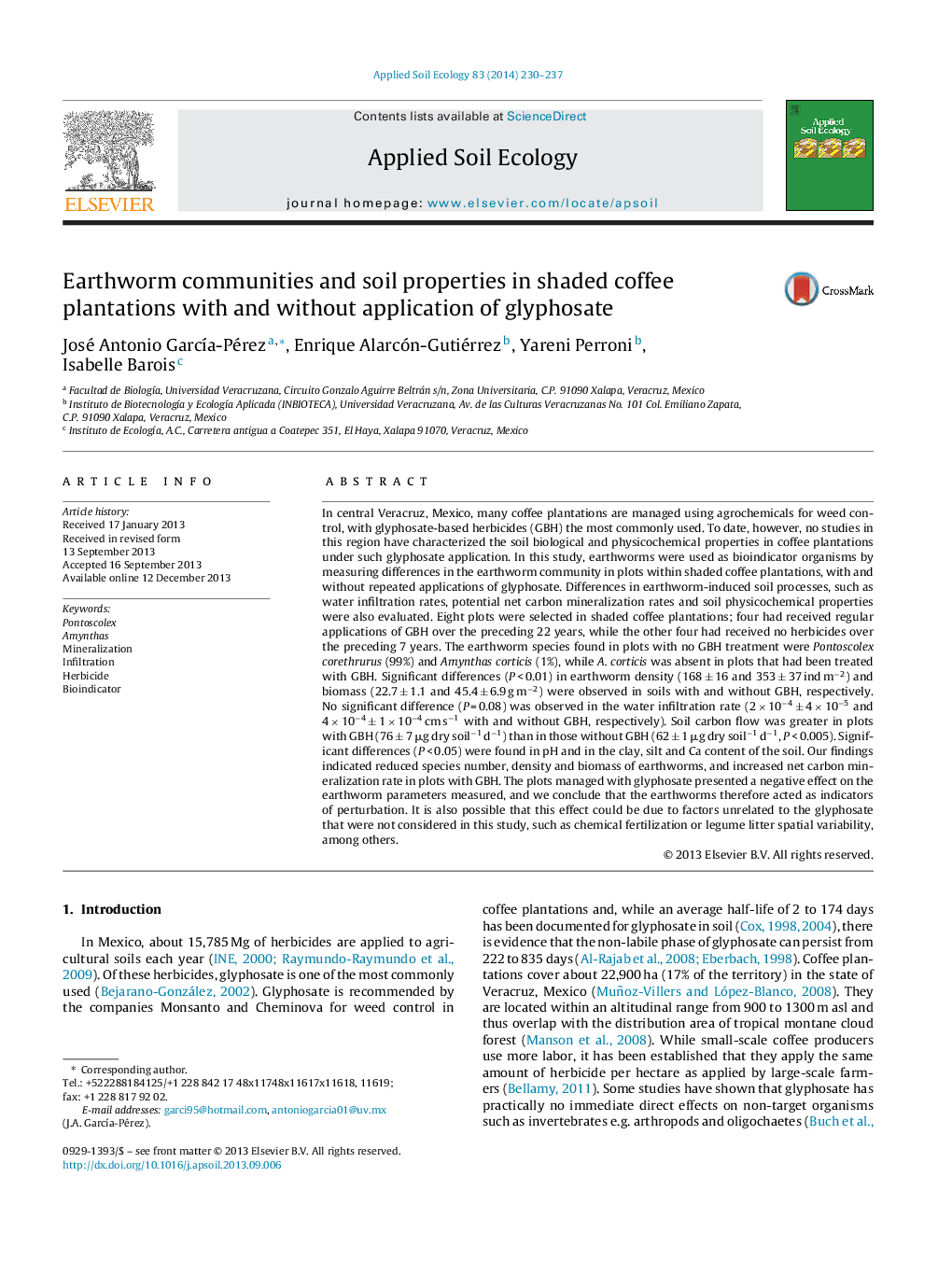| Article ID | Journal | Published Year | Pages | File Type |
|---|---|---|---|---|
| 4382221 | Applied Soil Ecology | 2014 | 8 Pages |
•We assessed coffee plantation soils with and without glyphosate (GBH) application.•Earthworms, infiltration, C mineralization and other soil variables were measured.•Soils without GBH had higher numbers of species, density, biomass, silt and Ca.•Soils with GBH were more acidic and had a higher soil carbon flow.•The results have implications for the nutrient dynamics in these soils.
In central Veracruz, Mexico, many coffee plantations are managed using agrochemicals for weed control, with glyphosate-based herbicides (GBH) the most commonly used. To date, however, no studies in this region have characterized the soil biological and physicochemical properties in coffee plantations under such glyphosate application. In this study, earthworms were used as bioindicator organisms by measuring differences in the earthworm community in plots within shaded coffee plantations, with and without repeated applications of glyphosate. Differences in earthworm-induced soil processes, such as water infiltration rates, potential net carbon mineralization rates and soil physicochemical properties were also evaluated. Eight plots were selected in shaded coffee plantations; four had received regular applications of GBH over the preceding 22 years, while the other four had received no herbicides over the preceding 7 years. The earthworm species found in plots with no GBH treatment were Pontoscolex corethrurus (99%) and Amynthas corticis (1%), while A. corticis was absent in plots that had been treated with GBH. Significant differences (P < 0.01) in earthworm density (168 ± 16 and 353 ± 37 ind m−2) and biomass (22.7 ± 1.1 and 45.4 ± 6.9 g m−2) were observed in soils with and without GBH, respectively. No significant difference (P = 0.08) was observed in the water infiltration rate (2 × 10−4 ± 4 × 10−5 and 4 × 10−4 ± 1 × 10−4 cm s−1 with and without GBH, respectively). Soil carbon flow was greater in plots with GBH (76 ± 7 μg dry soil−1 d−1) than in those without GBH (62 ± 1 μg dry soil−1 d−1, P < 0.005). Significant differences (P < 0.05) were found in pH and in the clay, silt and Ca content of the soil. Our findings indicated reduced species number, density and biomass of earthworms, and increased net carbon mineralization rate in plots with GBH. The plots managed with glyphosate presented a negative effect on the earthworm parameters measured, and we conclude that the earthworms therefore acted as indicators of perturbation. It is also possible that this effect could be due to factors unrelated to the glyphosate that were not considered in this study, such as chemical fertilization or legume litter spatial variability, among others.
